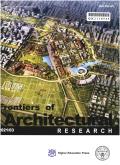隆达新桥(西班牙):这座城市发展史上的标志性建筑
IF 3.6
1区 艺术学
0 ARCHITECTURE
引用次数: 0
摘要
西班牙的隆达市拥有丰富的建筑遗产,几个世纪以来一直为当地居民所珍视。在其众多具有巨大遗产价值的建筑中,有一座非常引人注目:这座雄伟的桥矗立在这座城市所在的高原的悬崖上。它被称为新桥。这项独特的18世纪工程有利于隆达人口的扩张和增长,也影响了其城市发展。目前,它继续作为连接原始城市中心和墙外扩展区域的纽带。这项研究解决了这座桥建造的原因,以及标志着其不同建设阶段的情况。此外,在为桥梁提出的每个不同项目都已完整实施的情况下,对其外观可能存在的情况提出了不同的假设。所有这些都得出结论,这座桥的形态不是单一设计的结果,而是对其建造过程中进行的各种修改的反应。本文章由计算机程序翻译,如有差异,请以英文原文为准。
The New Bridge of Ronda (Spain): History of the construction of a landmark in the development of this city
The municipality of Ronda, in Spain, has a rich architectural heritage, treasured by its inhabitants over the centuries. Among its numerous buildings of great heritage value, one stands out: the monumental bridge that rises above the precipice of the plateau on which this city sits. It is known as the New Bridge. This unique 18th-century engineering work favoured the expansion and growth of Ronda's population, also affecting its urban development. Currently, it continues to serve as a link between the original city centre and its expansion areas beyond the walls. This research addresses the reasons why this bridge was constructed, as well as the circumstances that marked its different construction phases. In addition, different hypotheses are put forward on how its physiognomy might have been, in the case that each of the different projects proposed for the bridge had been carried out in its entirety. All of this has led to the conclusion that the morphology of this bridge was not the result of a single design, but rather responds to the various modifications made during its construction.
求助全文
通过发布文献求助,成功后即可免费获取论文全文。
去求助
来源期刊

Frontiers of Architectural Research
ARCHITECTURE-
CiteScore
6.20
自引率
2.90%
发文量
430
审稿时长
30 weeks
期刊介绍:
Frontiers of Architectural Research is an international journal that publishes original research papers, review articles, and case studies to promote rapid communication and exchange among scholars, architects, and engineers. This journal introduces and reviews significant and pioneering achievements in the field of architecture research. Subject areas include the primary branches of architecture, such as architectural design and theory, architectural science and technology, urban planning, landscaping architecture, existing building renovation, and architectural heritage conservation. The journal encourages studies based on a rigorous scientific approach and state-of-the-art technology. All published papers reflect original research works and basic theories, models, computing, and design in architecture. High-quality papers addressing the social aspects of architecture are also welcome. This journal is strictly peer-reviewed and accepts only original manuscripts submitted in English.
 求助内容:
求助内容: 应助结果提醒方式:
应助结果提醒方式:


